Mediterranean Food: Basic Overview
Common Ingredients
Common Cooking Methods
Courses
Meals
Key Taste
Eating Etiquette
Meal Presentation
Culinary Festivals
Influence and Fusion
Popular Types of Mediterranean Food
-
Soups
Soups in Mediterranean cuisine are known for their rich flavors, often made with a base of fresh vegetables, legumes, and sometimes meats or seafood.
These soups range from light, clear broths to more substantial, creamy variations, often enhanced with a medley of herbs and spices.
Ingredients like tomatoes, onions, garlic, and olive oil are staples. Mediterranean soups can be served as a starter or as a main course, paired with crusty bread for a complete meal.
-
Stews
Stews in this cuisine often feature a combination of meats, vegetables, and legumes, simmered in a rich, savory sauce.
Spices and herbs play a crucial role in seasoning these stews, with each region adding its unique twist to the recipe.
Mediterranean stews are typically enjoyed with a side of rice, couscous, or bread, making them a filling and satisfying option for any meal.
-
Bread and doughs
Bread and doughs form an integral part of Mediterranean meals, ranging from fluffy, leavened breads to thin, crispy flatbreads.
These are often baked in wood-fired ovens, imparting a distinct smoky flavor.
Doughs are versatile and can be used to make a variety of items, including pizzas, pies, and pastries, often filled with cheese, meats, or vegetables.
Olive oil is a common ingredient in Mediterranean bread dishes, contributing to their moist texture and rich flavor.
-
Grilled and barbecued dishes
Grilled and barbecued dishes are a highlight of Mediterranean cuisine, showcasing the region’s love for fresh, high-quality ingredients cooked over an open flame.
Meats, seafood, and vegetables are marinated with herbs, spices, and olive oil, then grilled to perfection, creating a smoky, charred exterior and a tender, juicy interior.
These dishes are often served with simple sides like salads or grilled vegetables, allowing the natural flavors of the ingredients to shine.
-
Rice dishes
Rice dishes are diverse and abundant in Mediterranean cuisine, often serving as the centerpiece of a meal. Paella, risottos, and pilafs are popular examples.
These dishes are typically prepared with a variety of meats, seafood, and vegetables, seasoned with aromatic spices and herbs, and cooked until the rice is flavorful and tender.
Rice dishes are frequently enjoyed in communal settings, bringing people together over a shared love for food.
-
Condiments and sauces
Condiments and sauces are essential in adding depth and complexity to Mediterranean dishes.
From the tangy, creamy tzatziki to the rich, smoky baba ghanoush, these accompaniments are made with a base of fresh ingredients like yogurt, eggplants, and tomatoes, seasoned with garlic, herbs, and spices.
They are used to enhance the flavor of grilled meats, vegetables, and breads, or served as part of a mezze platter, adding a burst of flavor to every bite.
Mediterranean dishes are delicacies commonly savored in the vast and culturally rich region surrounding the Mediterranean Sea, spanning Southern Europe, North Africa, and the Middle East.
This area’s cuisine is a melting pot, drawing influences from European delicacies, African culinary creations, and Asian specialties.
Key components include olive oil, which is used extensively for cooking and dressing; wheat, from which bread, pasta, and couscous are made; and grapes, which are consumed as fresh fruit, dried as raisins, or fermented into wine.
Mediterranean cooking is characterized by its emphasis on fresh vegetables and fruits, legumes, grains, fish, and seafood, with a moderate use of dairy and meat.
The flavors are typically bold and aromatic, derived from a variety of herbs and spices like rosemary, basil, thyme, oregano, and cumin. The cuisine is also known for its use of nuts, seeds, and dried fruits.
Cooking methods across the region, including grilling, roasting, and slow-cooking, help preserve the natural flavors and nutrients of ingredients
Stews and soups are common, often featuring a tomato base with a variety of vegetables and meats. Seafood dishes are particularly prominent along the coastal areas, where fish is often grilled, baked, or incorporated into rich stews.
In the region, the tradition of serving a variety of small dishes, known as meze, fosters communal dining and introduces a diversity of flavors in a single meal.
In addition to exploring the most popular dishes, I delve into traditional specialties, their global appeal, and health benefits.
Next, I’ll guide you through the features of regional cuisine, the best culinary spots in the Mediterranean, highlighting unique street foods’ features, where to find them, their significance in local festivities, and dining etiquette.
Plus, you can compare Mediterranean fare with Middle Eastern and Indian cuisines, uncover tips on ideal food and drink combos, and have the lowdown on the Mediterranean diet, including dos and don’ts.
39 Popular Mediterranean dishes with Filters
Explore the colorful Mediterranean cuisine through the top 39 dishes, sorted by popularity. Discover your new favorite by filtering through ingredients, flavors, cooking methods, types of dishes, and meal times.
From traditional classics and national favorites to inventive fusion options, street food, and exotic delicacies, there’s something to delight every palate.
Exotic dishes in the Mediterranean include lesser-known regional specialties that use unique ingredients or cooking techniques.
Fusion dishes in Mediterranean cuisine reflect the region’s long history of trade and cultural exchange, blending traditional Mediterranean flavors with elements from other cuisines.
Pizza
- National
- Street Food
- Traditional
Pizza, originating from Italy, is a beloved dish featuring a round, flat dough base traditionally topped with tomato sauce, cheese, and various other ingredients like vegetables, meats, and herbs.
It is baked at high temperatures, often in a wood-fired oven, creating a deliciously crispy crust. The concept of pizza has evolved over centuries, with the modern version popularized in Naples.
Recognized for its cultural significance, Neapolitan pizza has even been listed as an intangible cultural heritage by UNESCO. Pizza has numerous variations worldwide, adapting to local tastes and ingredients, making it a global favorite.
In the Mediterranean region, particularly in Italy, it remains a staple of the cuisine, enjoyed in traditional pizzerias and casual dining settings alike.
Pasta
- National
- Traditional
Pasta, a cornerstone of Italian cuisine, is a type of noodle made from an unleavened dough of wheat flour mixed with water or eggs. It is then formed into various shapes and cooked by boiling or baking.
Originating from Italy, pasta comes in two main categories: dried (pasta secca) and fresh (pasta fresca). There are over 310 known pasta shapes with more than 1,300 names, which can vary by region within Italy.
Pasta is versatile in its culinary uses, often served with a sauce, used in soups, or baked in casseroles. It is a staple food in Mediterranean cuisine and has been embraced globally, with each culture adapting it to local tastes and ingredients.
Hummus
- Street Food
- Traditional
Hummus, also known as hommus or houmous in some regions, is a traditional Mediterranean and Middle Eastern dish made from a blend of mashed chickpeas, tahini (sesame seed paste), lemon juice, and garlic.
This savory spread or dip is often garnished with olive oil, whole chickpeas, parsley, and paprika, and is commonly served with pita bread.
It is enjoyed in various countries around the Mediterranean and beyond, including Egypt, Israel, and Lebanon. Hummus is not specifically associated with any festivals or celebrations but is a versatile dish enjoyed on various occasions.
Kebab
- National
- Street Food
- Traditional
Kebab, also known as kabob in North America, is a widely enjoyed dish originating from the Middle East and has become a staple in Mediterranean cuisine. It is known for its versatility, being served as anything from street food to a traditional dish in various forms. Popular types include Shish kebab (skewered and grilled meat), Doner kebab (meat cooked on a vertical rotisserie), and Adana kebab (spicy minced meat from Turkey).
Kebabs have gained international popularity, often featured at social gatherings and celebrations, symbolizing hospitality and festivity across different cultures.
Gyros
- National
- Street Food
- Traditional
Gyros, also known as gyro in some regions, is a popular Greek street food consisting of meat traditionally cooked on a vertical rotisserie, then thinly sliced and served wrapped in pita bread with a variety of accompaniments such as tomato, onion, fried potatoes, and tzatziki sauce.
Originating in Greece, gyros is a Mediterranean staple, typically made with pork or chicken, although beef and lamb variations are found in other countries.
This dish shares similarities with other Mediterranean and Middle Eastern dishes like shawarma and doner kebab, highlighting the rich cross-cultural influences in the region’s cuisine.
Gyros is enjoyed in many Mediterranean countries and has gained popularity worldwide, especially in urban areas with vibrant street food cultures.
Greek Salad
- National
- Traditional
Greek salad, also known as horiatiki salad, is a traditional dish in Greek cuisine, typically comprising tomatoes, cucumbers, onions, feta cheese, and Kalamata olives.
The salad is seasoned with salt, Greek oregano, lemon juice, and olive oil, embodying the simplicity and freshness of Mediterranean flavors. It is often considered a farmer’s meal, reflecting the ingredients readily available to a Greek farmer.
This salad is popular not only in Greece but has gained popularity across the Mediterranean and beyond, with variations adapting to local tastes and ingredient availability.
In some regions, additional ingredients like green bell peppers or caper berries might be included, especially in the Dodecanese islands.
Greek salad is commonly enjoyed as a refreshing, light meal or as a side dish, particularly during the warmer months.
Baklava
- National
- Traditional
Baklava is a rich, multi-layered pastry, beloved in Mediterranean and Middle Eastern cuisines, made from thin sheets of filo dough, filled with chopped nuts, and sweetened with syrup or honey.
Its origins are debated, with some tracing it back to ancient civilizations, but it has become a staple dessert in countries like Greece, Turkey, Iran, and across the Arab world, as well as in the Balkans and Central Asia.
Baklava varies significantly by region; for example, the Greek version often uses walnuts and honey, while in Turkey, pistachios are more common.
This dessert is particularly associated with festive occasions in many cultures, such as Eid in the Arab world and during Ramadan.
Paella
- National
- Traditional
Paella is a renowned Mediterranean rice dish that hails from Valencia, Spain. It is considered a national dish of Spain and embodies the rich culinary traditions of the Mediterranean region.
Paella is celebrated for its versatility and has numerous famous variations, including Paella Valenciana, which features rabbit, chicken, and green beans, and Paella de Marisco, which is laden with seafood.
This dish is popular not only in its home country but also across the Mediterranean and around the world. Traditionally cooked in a wide, shallow pan over an open fire, paella is often associated with social gatherings and festive occasions.
Falafel
- Fusion
- National
- Street Food
- Traditional
Falafel, also known as ta’amiya in Egypt and Sudan, is a popular Mediterranean street food. Originating from Egypt, this deep-fried ball or patty is made from ground chickpeas, broad beans, or both, and is seasoned with various herbs and spices.
It is traditionally served in a pita or wrapped in flatbread, often accompanied by salads, pickled vegetables, hot sauce, and tahini-based sauces. It is commonly enjoyed in countries like Jordan, Lebanon, Syria, and beyond the Mediterranean region.
In addition to being a daily fare, falafel is sometimes consumed during religious festivals such as Ramadan and Lent.
Tajine
- National
- Traditional
Tajine, also spelled tagine, is a quintessential North African dish that derives its name from the earthenware pot it is cooked in. This dish is a staple in Moroccan and Algerian cuisines but is enjoyed across the Mediterranean and beyond.
Tajines are slow-cooked stews that can include a variety of ingredients such as meats, poultry, fish, vegetables, and fruits, all simmered with a blend of aromatic spices like ginger, cumin, turmeric, cinnamon, and saffron.
The unique cooking process in the tajine pot, with its conical lid, allows for the steam to condense and keep the stew moist, making it a flavorful and tender meal.
Tajines often feature a sweet and savory element, with popular variations including lamb with prunes or chicken with preserved lemons and olives.
Moussaka
- National
- Traditional
Moussaka is a traditional dish in Mediterranean cuisine, particularly famous in Greece, where it was popularized in its modern form in the 1920s by the chef Nikolaos Tselementes.
This layered casserole is typically made with eggplants or potatoes, ground meat (often lamb), and topped with a creamy béchamel sauce, then baked to perfection.
Variations of moussaka are found throughout the Balkans, Middle East, and Eastern Mediterranean, with each region adding its unique twist.
For example, in Egypt, moussaka is often prepared without béchamel and served with a tomato sauce, sometimes even enjoyed cold. In Turkey, the dish is more likely to be served deconstructed, with fried eggplant slices covered in a savory tomato-based meat sauce.
Moussaka is a beloved dish that transcends borders, enjoyed in various forms from Greece to the Levant and beyond, often associated with family gatherings and festive occasions.
Couscous
- National
- Traditional
Couscous is a traditional North African dish made from small steamed balls of crushed durum wheat semolina that is a staple in the Maghrebi cuisines of Algeria, Tunisia, Mauritania, Morocco, and Libya. It is typically accompanied by a stew that is spooned over it
Couscous has a unique preparation method where the semolina is moistened and then formed into small granules before being steamed.
This dish is versatile and can be found in various forms across the Mediterranean, with some variations including pearl millet, sorghum, and bulgur.
In 2020, couscous was recognized by UNESCO for its cultural significance, highlighting its role in the culinary traditions of the Mediterranean and beyond.
Ratatouille
- Traditional
Ratatouille is a classic dish from the Provence region of France, particularly associated with the city of Nice. It is a stewed vegetable dish, celebrated for its vibrant colors and blend of flavors.
The main ingredients typically include tomatoes, garlic, onions, zucchini, eggplant, bell peppers, and a mix of fresh herbs like basil, thyme, or marjoram, which contribute to its distinctive taste.
Ratatouille can be served as a side dish, a main course, or even as a filling for omelets or crepes.
The preparation of ratatouille varies, with some cooks preferring to sauté each vegetable separately to maintain its individual flavor before combining them, while others cook all the vegetables together for a more blended taste.
Ratatouille has gained international recognition, not only for its delicious flavor but also as a symbol of Mediterranean cooking, emphasizing fresh, seasonal produce.
Shawarma
- Street Food
- Traditional
Shawarma is a savory dish from the Mediterranean and Middle Eastern regions, consisting of meat that is marinated, then stacked in a cone-like shape and roasted slowly on a vertical rotisserie or spit.
Traditionally made with lamb, chicken, beef, or a mixture of meats, the thinly sliced cuts are served wrapped in a flatbread, such as pita or laffa, often accompanied by vegetables, fries, and various sauces like tahini or garlic cream.
Shawarma is a popular street food across the Mediterranean, Middle East, and beyond, with variations like the Greek Gyro and the Mexican Al pastor. It’s commonly enjoyed at outdoor markets, festivals, and as a quick, flavorful meal.
Tzatziki
- Traditional
Tzatziki, also known as cacık or tarator in some regions, is a refreshing Mediterranean dip or sauce made primarily from yogurt, grated cucumber, garlic, olive oil, and often flavored with herbs like dill or mint.
Originating from the cuisine of Southeastern Europe and West Asia, tzatziki is a versatile condiment that accompanies a variety of dishes, including grilled meats, gyros, and as part of a mezze platter.
It’s celebrated in countries like Greece, Turkey, and across the Balkans, where it’s enjoyed in both casual and festive settings, making it a beloved element of Mediterranean dining culture.
Gazpacho
- Street Food
- Traditional
Gazpacho, also known as Andalusian gazpacho, is a refreshing cold soup made from raw, blended vegetables, originating from the southern regions of the Iberian Peninsula.
A staple of Mediterranean cuisine, this traditional dish is especially popular in Spain and Portugal during the hot summer months.
Gazpacho is known for its variations such as Salmorejo and Ajoblanco, which are also cold soups but with different ingredient profiles.
The dish is celebrated for its simplicity and the use of fresh, ripe vegetables like tomatoes, cucumbers, and bell peppers, making it a quintessential summer fare in Mediterranean countries and beyond.
Focaccia
- Street Food
- Traditional
Focaccia is an Italian flatbread known for its olive oil-rich crust and airy, soft interior. Versatile in nature, this bread is often seasoned with herbs like rosemary or topped with various ingredients such as olives, tomatoes, and onions.
Focaccia can serve as a side to many meals, as a base for pizza, or simply enjoyed on its own. It originates from the Mediterranean region, particularly in Italy, where it’s a staple part of the cuisine.
Variations of focaccia include Focaccia di Recco, filled with cheese, and Focaccia Barese, topped with tomatoes and olives. This bread is popular not only in Mediterranean countries but also worldwide, often found in Italian restaurants and bakeries.
Baba Ghanoush
- Fusion
- Traditional
Baba ghanoush is a Levantine appetizer, widely enjoyed across the Mediterranean and beyond, including countries like Iraq, Armenia, Syria, Jordan, Israel, Palestine, Lebanon, Egypt, Libya, and Turkey.
It is made from roasted eggplant blended with olive oil, lemon juice, various seasonings, and tahini, creating a rich, smoky dip. Traditionally, the eggplant is cooked over an open flame before peeling, which imparts a distinctive smoky flavor to the dish.
Baba ghanoush is commonly served as a meze or starter, often accompanied by pita bread.
Variations of the dish include spices like coriander and cumin, and it is sometimes confused with or related to mutabbal, a similar dish that is sometimes considered a spicier version of baba ghanoush.
Kofta
- Traditional
Kofta is a term used to describe a variety of meatball or meatloaf dishes found in Mediterranean, Middle Eastern, South Asian, and Central Asian cuisines.
Typically made from ground meat mixed with spices and onions, koftas can be grilled, fried, steamed, or baked and are often served with a side of rice or bread.
Variations of kofta include the Indian Malai Kofta, the Middle Eastern Kebab, and the Balkan Ćevapi. This dish is popular in countries like Turkey, Greece, India, and Iran, and is often featured in festive meals and family gatherings.
Tabbouleh
- National
- Street Food
- Traditional
Tabbouleh, also known as tabouli, is a traditional Levantine salad that has become a beloved part of Mediterranean cuisine.
This refreshing dish is primarily made from finely chopped parsley, with additions of bulgur wheat, tomatoes, mint, onion, and seasoned with olive oil, lemon juice, salt, and pepper.
Often served as part of a mezze platter, tabbouleh is popular in countries like Lebanon, Syria, and Turkey. It’s associated with spring and summer celebrations due to its fresh and light ingredients, making it a common dish at outdoor gatherings and festive occasions.
Pita
- Street Food
- Traditional
Pita, also known as Arabic bread or Greek bread in some regions, is a type of yeast-leavened round flatbread that originates from the Mediterranean and Levant areas.
This traditional bread is baked from wheat flour and is well-known for its interior pocket, making it a versatile component in various dishes.
Pita is popular in countries around the Mediterranean Sea and has spread to other parts of the world due to its adaptability in different culinary traditions.
There are several variations of pita, including those without pockets, and it is commonly used to scoop sauces or dips like hummus, or to wrap foods such as kebabs, gyros, and falafel. Pita is enjoyed in both everyday meals and special gatherings.
Dolma
- National
- Traditional
Dolma refers to a family of stuffed dishes that are a hallmark of Mediterranean and Middle Eastern cuisines.
Derived from the Turkish word for ‘stuffed,’ dolma refers to dishes typically involving vegetables like grape leaves, peppers, tomatoes, or zucchini filled with a mixture of rice, meats, and spices.
One of the most famous variations is the grape leaf dolma, known as “sarma,” which can be served hot or cold and is often accompanied by yogurt.
Dolma is widely enjoyed in countries such as Turkey, Greece, Armenia, and Iran, and it’s a common feature at festive occasions and family gatherings, symbolizing a rich tradition of communal meals and hospitality.
Risotto
- Traditional
Risotto is a traditional Italian dish known for its creamy consistency, achieved by cooking starchy rice varieties like Arborio or Carnaroli in broth to a creamy consistency.
The dish is often enriched with ingredients such as butter, onion, white wine, and parmesan cheese, and can include a wide range of other ingredients like mushrooms (Risotto ai funghi), seafood (Risotto al frutti di mare), or saffron (Risotto alla Milanese).
Originating from Northern Italy, risotto has gained widespread popularity across the Mediterranean and beyond, often served as a primo (first course) in Italian dining and featured in special occasions and gourmet restaurants.
Souvlaki
- National
- Street Food
- Traditional
Souvlaki is a popular Greek street food that consists of small pieces of meat, often pork, chicken, beef, or lamb, grilled on a skewer.
Known for its simplicity and delicious taste, souvlaki is a staple of Mediterranean cuisine and is often served wrapped in pita bread with various accompaniments like tzatziki sauce, tomatoes, and onions.
This dish has various regional variations across Greece and has gained popularity in other Mediterranean countries and beyond, often enjoyed at casual gatherings and local festivals.
Méchoui
- Traditional
Méchoui is a traditional North African dish that involves spit-roasting a whole sheep or lamb over a fire. This culinary practice is deeply rooted in the Maghrebi cuisine, particularly popular in countries like Algeria and Morocco.
Méchoui is known for its rich, smoky flavor, achieved by slow-roasting the meat next to a pile of embers, allowing it to cook evenly and retain its juices.
The dish is often seasoned with a blend of spices, including ras el hanout. It is traditionally served at large gatherings or celebrations, making it a communal meal that brings people together.
Halloumi Cheese
- Traditional
Halloumi is a traditional semi-hard cheese originating from Cyprus, made primarily from a blend of goat’s and sheep’s milk, and occasionally cow’s milk.
Known for its unique squeaky texture and high melting point, Halloumi can be grilled or fried without losing its shape, making it a favored choice for a variety of dishes.
It’s a popular component in Mediterranean cuisine, especially in the Eastern Mediterranean region, and has gained international popularity for its versatility in cooking.
Halloumi can be enjoyed raw, but it is often served grilled or fried, accompanied by vegetables or as part of salads and sandwiches.
Kleftiko
- National
- Traditional
Kleftiko, a traditional Greek dish, is a slow-cooked lamb delicacy, originally marinated in garlic, lemon juice, and a blend of herbs and spices, then baked in a sealed container.
This method of cooking, which tenderizes the meat until it effortlessly falls off the bone, is a testament to the dish’s origins among the klephts, Greek bandits of the countryside who needed to cook their stolen meat in hidden, sealed pits to avoid detection by the smoke.
Kleftiko, which means “in the style of the klephts,” is a celebrated part of Greek cuisine, particularly known for its tender, flavorful, and aromatic qualities.
This dish is often enjoyed in Greek tavernas and is a staple at festive occasions and family gatherings, embodying the rich culinary traditions of Greece.
Lentil Soup
- Traditional
Lentil soup is a hearty and nutritious dish that is a staple in Mediterranean cuisine, known for its simplicity and rich flavor.
Made primarily with lentils, the soup can include a variety of vegetables, herbs, and sometimes meat, offering numerous variations such as the spicy red lentil soup in Turkey or the thicker, more stew-like versions in Greece.
Lentil soup is celebrated for its health benefits, being rich in protein, fiber, and minerals. It’s a common comfort food in countries around the Mediterranean Sea. It is often served during colder months and religious fasting periods.
Börek
- National
- Street Food
- Traditional
Börek, also known as burek in some regions, is a traditional pastry that originates from the Mediterranean and extends to the Balkans and the Middle East.
It consists of thin layers of dough such as phyllo or yufka, which are filled with a variety of ingredients including cheese, minced meat, vegetables, or potatoes.
Börek is versatile and can be prepared in different shapes like rolls, spirals, or pies, making it a popular dish in countries like Turkey, Greece, and across the Balkans.
There are many famous variations of börek, such as Su böreği (water börek) and Sigara böreği (cigar börek). This dish is often enjoyed as a snack or a light meal and is a staple at gatherings and special occasions.
Koshary
- National
- Street Food
- Traditional
Koshary, also known as kushari or koshari, is Egypt’s national dish and beloved street food. This unique dish is a mix of pasta, rice, lentils, and vermicelli, all topped with a spicy tomato sauce, then garnished with chickpeas and crispy fried onions.
Koshary is a vegetarian dish that embodies the flavors and textures of Mediterranean cuisine, offering a hearty and satisfying meal. It’s particularly popular in Cairo and other parts of Egypt, where it’s enjoyed by people from all walks of life.
The dish has a rich history, with some suggesting its origins date back to Ancient Egypt. Koshary is not only a staple food in Egypt but has also gained popularity in other regions, with variations found in Eastern Arabia, Yemen, and even outside the Mediterranean region.
It’s often associated with communal eating and is a common choice for large gatherings and celebrations.
Musakhan
- National
- Traditional
Musakhan, also known as muhammar, is a traditional Palestinian dish that consists of roasted chicken seasoned with sumac, allspice, saffron, and pine nuts, served atop taboon bread.
Recognized as the national dish of Palestine, Musakhan is celebrated for its simplicity and the accessibility of its ingredients, which are staples of Palestinian cuisine.
This dish is particularly popular among Palestinians, Israeli Arabs, and Jordanians, and can also be found in Syria, Lebanon, and Jordan.
Musakhan is typically enjoyed with one’s hands and is often accompanied by soup. It’s a dish that embodies the flavors and culinary traditions of the Mediterranean region.
Fasolada
- National
- Traditional
Fasolada, known as the “national food of the Greeks,” is a traditional Mediterranean white bean soup. It’s a simple yet hearty dish made with white beans, olive oil, and vegetables such as carrots, celery, and onion, often flavored with a tomato-based sauce.
Fasolada is a staple in Greek, Mediterranean, and Cypriot cuisines, embodying the essence of comfort food in these regions. It’s typically served with olives and crusty bread, making it a complete meal.
This dish is especially popular during the colder months and is sometimes associated with religious fasting periods in Greece, where it’s consumed as a meat-free option.
Ful Medames
- National
- Traditional
Ful medames is a traditional Egyptian dish, often considered the national dish of Egypt. It’s a hearty stew made from fava beans that are slowly cooked and then seasoned with olive oil, cumin, and other spices.
The dish is typically garnished with fresh ingredients like parsley, garlic, onion, and lemon juice, making it a vibrant and flavorful meal. Ful medames is a staple in Egyptian cuisine and is popular across the Mediterranean and the Middle East.
It’s commonly associated with breakfast but can be enjoyed at any meal. The dish has various regional variations, with some including ingredients like chickpeas, hot sauce, garlic juice, and vinegar.
Kibbeh
- National
- Traditional
Kibbeh, a key Mediterranean dish, especially in Lebanon and Syria, is made of finely ground meat (lamb or beef), bulgur wheat, and Levantine spices, shaped in various forms. It can be fried, baked, grilled, or served raw as Kibbeh nayyeh.
Popular across the Mediterranean and in countries like Cyprus, Egypt, Iraq, Jordan, Palestine, and Turkey, kibbeh is known for its versatility with variations such as Kibbeh sumāqiyye (with sumac), Kibbeh labaniyye (with yogurt), and Kibbeh safarjaliyye (with quince).
Aleppo is renowned for its diverse kibbeh recipes. The raw version, Kibbeh nayyeh, is a special treat often served with olive oil, mint, green onions, and pita bread, symbolizing hospitality.
Mulukhiyah
- Exotic
- National
- Traditional
Mulukhiyah, also known as molokhiyya, melokhiyya, or ewedu, is a traditional dish in Mediterranean cuisine, particularly popular in Egypt and the Levant region, including countries like Syria, Lebanon, Palestine, and Jordan.
This dish is made from the leaves of the jute plant, known as Corchorus olitorius, which are known for their slightly bitter taste and mucilaginous texture when cooked, similar to okra.
Mulukhiyah is typically prepared as a soup or stew, often flavored with garlic, coriander, and sometimes meat, such as chicken, rabbit, or lamb, depending on regional preferences.
In Egypt, it’s considered a national dish and is commonly served with rice or bread. Variations of mulukhiyah can also be found in Cyprus, where it’s adapted to local tastes.
Hamin
- Traditional
Hamin, also known as dafina, is a traditional Sephardic Jewish Sabbath stew originating from Iberia. This hearty dish is composed of whole grains, meat cubes, chickpeas or beans, onions, and cumin, and is slow-cooked to conform with Jewish laws prohibiting cooking on the Sabbath.
Hamin is designed to be prepared before the Sabbath begins and kept warm until it’s served the following day.
Over time, various Jewish communities have developed their own versions of this stew, adapting it to local ingredients and culinary influences. This has resulted in a wide array of hamin variations across Sephardi and Ashkenazi kitchens worldwide.
Mansaf
- National
- Traditional
Mansaf, the national dish of Jordan, is a traditional Levantine meal consisting of lamb cooked in a sauce of fermented dried yogurt, served with rice or bulgur, and often accompanied by shrak bread.
This dish is a staple in Jordanian cuisine and is also enjoyed in other parts of the Levant, including Kuwait, Saudi Arabia, and Syria.
Mansaf is known for its unique preparation and presentation, often garnished with almonds and pine nuts, and is deeply rooted in Jordanian culture and traditions.
It is typically served on special occasions such as weddings, births, graduations, and major holidays like Eid ul-Fitr, Eid ul-Adha, Christmas, Easter, and Jordan’s Independence Day.
Bazin Bread
- Traditional
Bazin bread is a traditional, national dish of Libya, known for its unique preparation and serving style. This unleavened bread is made from barley, water, and salt, and is known for its paste-like and hardened texture.
The dough is boiled, beaten into shape using a special stick called a magraf, and then either baked or steamed to achieve its final form.
Often served in a dome or pyramid shape, tomato sauce, eggs, potatoes, and mutton typically accompany Bazin Bread. The dish is enjoyed communally, often eaten with the fingers, and is a staple at Libyan meals.
Chakhchoukha
- Traditional
Chakhchoukha, also known as chekhechoukha, is a traditional Algerian dish that consists of small pieces of flatbread mixed with a hearty tomato-based stew. This dish is a staple in Algerian cuisine, particularly celebrated in regions like Constantine, Batna, Biskra, and Ms’sila.
Chakhchoukha is often associated with festive occasions and is especially popular during celebrations such as Mouloud (the Prophet Muhammad’s birthday), Achoura, and the Amazigh New Year, Yennayer.
The dish has several variations, including Chakhchoukha Biskria and Chakhchoukhat dfar, each bringing a unique twist to the traditional recipe.
List of Mediterranean Dishes by Country
What Are the Features of Mediterranean Dishes by Regions?
This section breaks down the distinctive features of Mediterranean dishes by region:
The diversity of Mediterranean dishes by region highlights the unique blend of local ingredients and cultural influences. Next, explore which countries stand out in this culinary landscape.
What Are the Top Mediterranean Food Countries?
Below are the leading countries in Mediterranean cuisine, along with their culinary highlights:
Identifying the top Mediterranean food countries unveils a rich tapestry of flavors and traditions that lay the foundation for the widespread popularity of Mediterranean street food.
What Makes Mediterranean Street Food Famous?
Mediterranean street food is renowned for the following main reasons:
The fame of Mediterranean street food lies in its ability to offer a quick, delicious, and authentic taste of regional cuisines, sparking curiosity about the countries that excel in this vibrant aspect of their food culture.
Which Mediterranean Countries Have the Best Street Food?
Exploring Mediterranean street food reveals a delightful array of flavors and dishes that reflect the region’s rich culinary diversity. Below is a quick look at the most famous countries:
The best street food in Mediterranean countries showcases the art of combining simplicity with flavor. Right next to this part, you can consider the significance of these dishes in larger, more important celebrations.
What Are the Roles of Mediterranean Dishes in Important Celebrations?
Mediterranean cuisine is central to various celebrations, embodying cultural traditions and spiritual practices.
Moving on, uncover the art of Mediterranean dining etiquette, emphasizing communal eating and respect for food.
What Is Mediterranean Dining Etiquette?
When dining in Mediterranean settings, several key etiquette points should be considered:
Understanding Mediterranean dining etiquette, setting the stage for a comparison between Mediterranean and Middle Eastern dishes, where similarities in ingredients highlight the historical and cultural connections.
Mediterranean Dishes vs. Middle Eastern Dishes
Mediterranean and Middle Eastern dishes, while often grouped together due to geographical proximity and some overlapping ingredients, have distinct characteristics, flavors, and traditions. Here’s a comparison to highlight their differences:
Mediterranean Dishes
Middle Eastern Dishes
Mediterranean and Middle Eastern culinary creations, despite sharing some ingredients and influences, each offer distinct flavors, ingredients, and culinary traditions, reflecting their unique cultural heritages.
Next, why don’t you compare Mediterranean dishes with Indian dishes, known for their intense spices and use of dairy.
Mediterranean Dishes vs. Indian Dishes
Mediterranean cuisine and Indian dishes are both rich and diverse, reflecting the cultural, historical, and geographical variety of their respective regions. However, they have distinct characteristics that set them apart.
Mediterranean Dishes
Indian Dishes
Mediterranean dishes focus on fresh produce, olive oil, and lean proteins for a healthy diet, while wholesome delicacies from India are known for its complex spices and a wide variety of vegetarian and meat dishes, offering diverse flavors and textures.
Up next, let’s discover the harmony between the dish and the drink in this cuisine.
Which Beverages to Pair with Mediterranean Dishes?
Here’s how beverages complement Mediterranean dishes to enhance the overall dining experience:
This selection of drinks from Mediterranean enhance the flavors of Mediterranean dishes, paving the way to explore the rich history and popularity of this diet.
When Did the Mediterranean Diet Become Popular?
The Mediterranean diet, inspired by the traditional food habits of southern Spain, southern Italy, and Crete in the early 1960s, gained widespread recognition in the 1990s.
This diet emphasizes a plant-based approach, focusing on unprocessed cereals, legumes, vegetables, fruits, with moderate consumption of fish, dairy products (mainly cheese and yogurt), and a low amount of red meat.
Olive oil is a key component, associated with health benefits like reducing mortality risk and chronic disease.
The diet’s popularity in the United States was bolstered by its inclusion in the 2015–2020 Dietary Guidelines for Americans, alongside the DASH diet and vegetarian diet, due to its potential for reducing all-cause mortality and the risk of heart disease, obesity, and other health benefits.
The concept was first publicized in 1975 by American biologist Ancel Keys and chemist Margaret Keys but did not gain significant attention until the 1990s, following objective data from epidemiological studies in Calabria, Naples, and Madrid, and further confirmed by the Seven Countries Study.
In summary, the Mediterranean diet became popular in the 1990s, following decades of research and publication that highlighted its health benefits. It’s also important to understand its dietary guidelines to fully appreciate its benefits.
What Foods Can and Cannot Eat on The Mediterranean Diet?
Here’s a breakdown of what you can and cannot eat on the Mediterranean diet based on information from Mediterranean Living and Mayo Clinic:
| Foods to Eat | Foods to Limit or Avoid |
|---|---|
| Vegetables: A wide variety of fresh vegetables including onions, garlic, potatoes, artichokes, zucchini, eggplant, squash, and leafy greens like spinach, kale, and arugula are encouraged. Fruits: Fruits such as grapes, tomatoes, lemons, oranges, apples, and berries are part of the daily diet. Nuts and Seeds: Healthy fats from pine nuts, walnuts, almonds, and seeds like sesame and pumpkin are included. Whole Grains, Rice, and Pasta: Whole grains such as whole wheat, bulgur wheat, quinoa, rice, and whole-grain pasta are recommended. Legumes: Beans and legumes like lentils, chickpeas, and kidney beans are key for protein and fiber. Seafood: Fish and seafood, especially fatty fish rich in omega-3 fatty acids like salmon, sardines, and mackerel, are recommended two to three times a week. Healthy Fats: Unsaturated fats, particularly olive oil, are a staple in cooking and dressing foods. Dairy: Moderate portions of dairy, especially fermented dairy like yogurt and cheeses such as feta and mozzarella, are included. | Red Meat: Red meat is consumed only occasionally, and lean cuts of grass-fed beef or lamb are preferred when consumed. Added Sugars and Sweets: Foods with added sugars are limited, including sweets, sodas, and candies. Processed Foods: Highly processed foods and refined grains are not part of the diet, aiming for whole, minimally processed options instead. |
Let’s try these Mediterranean dishes, share your culinary adventures, and engage with our community by liking, sharing, and commenting on this article. Your feedback fuels our passion for bringing more delicious recipes and culinary insights directly to you.


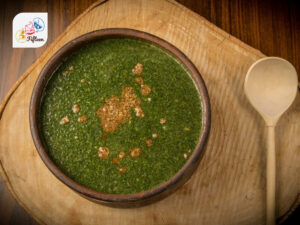
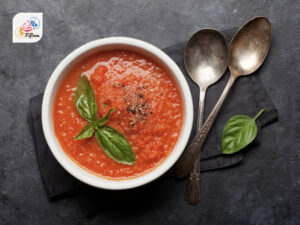
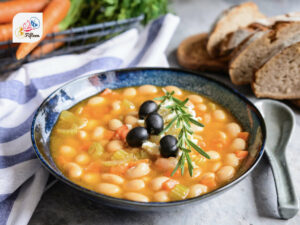
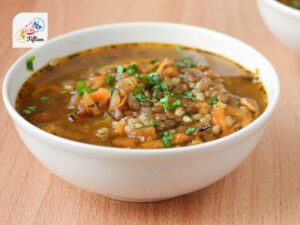
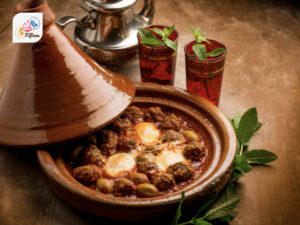
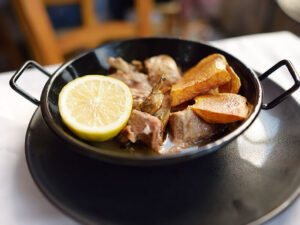
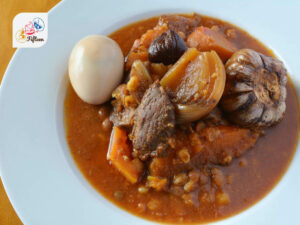
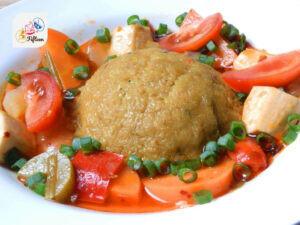
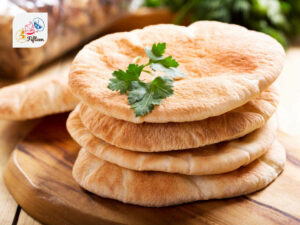
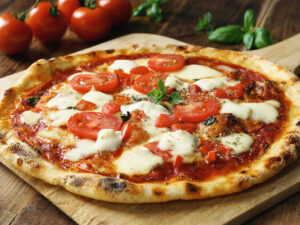
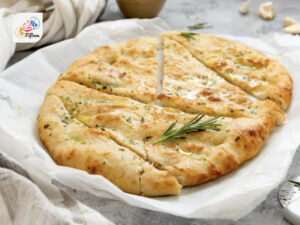
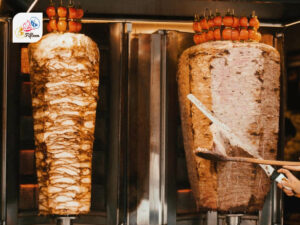
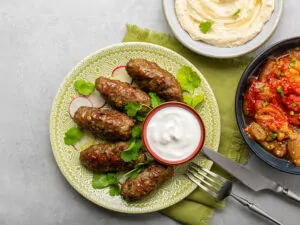
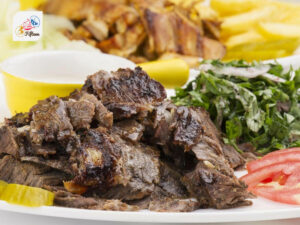
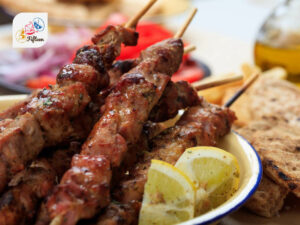
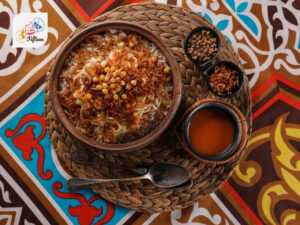
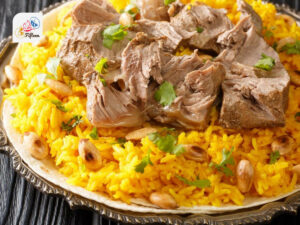
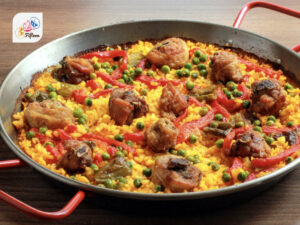
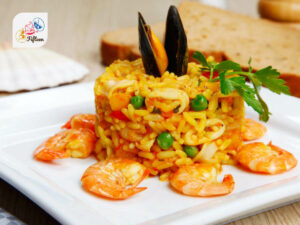
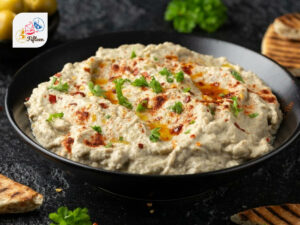
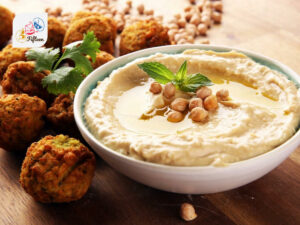
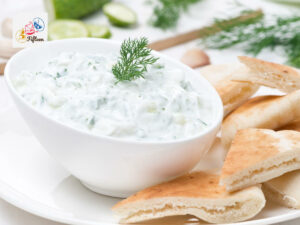

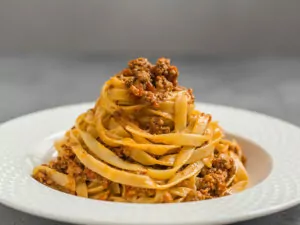
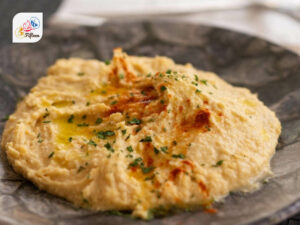
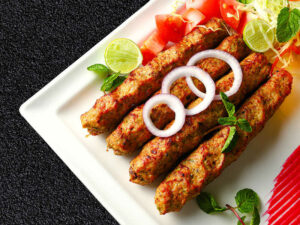
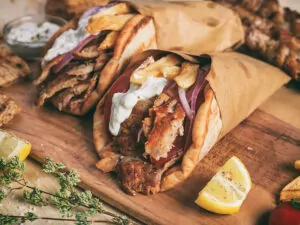
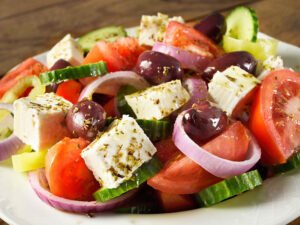

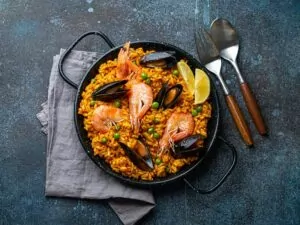
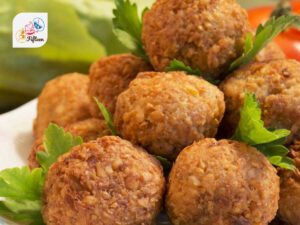
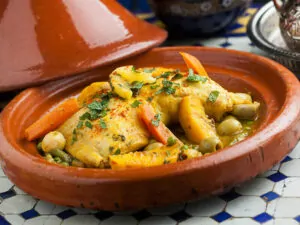

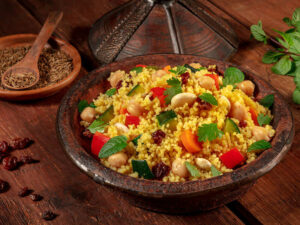
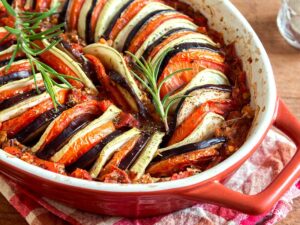
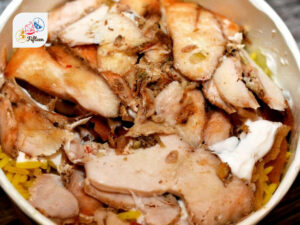
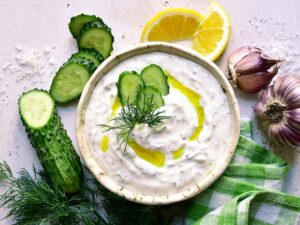
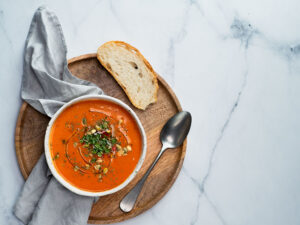

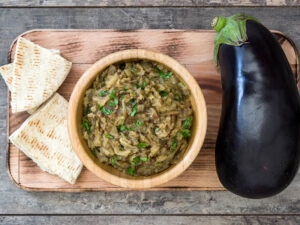
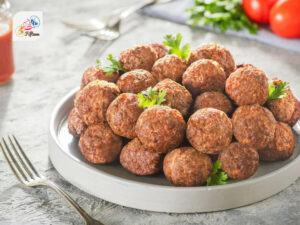
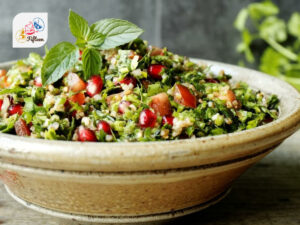
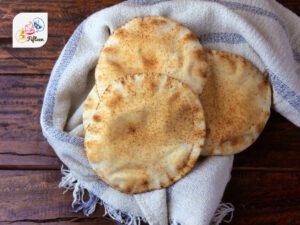
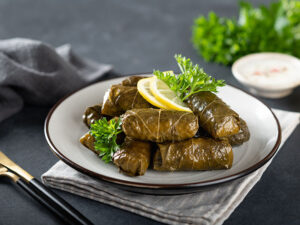
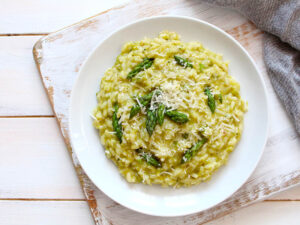
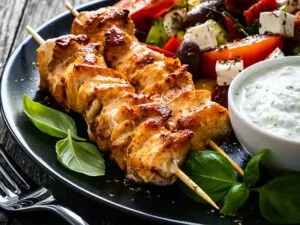
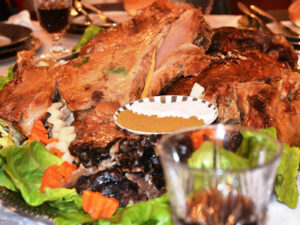
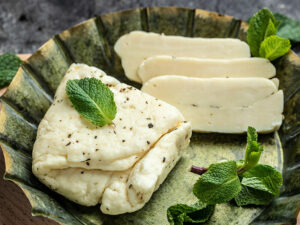
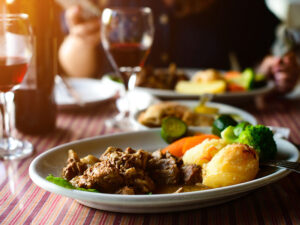
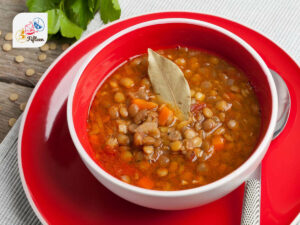

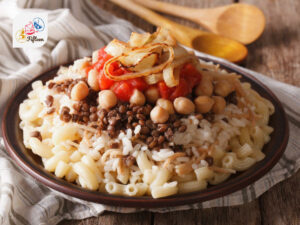
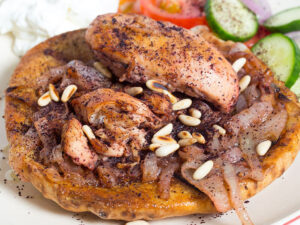
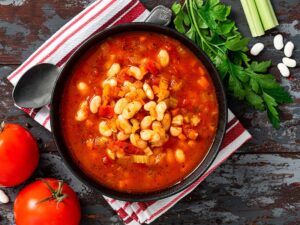
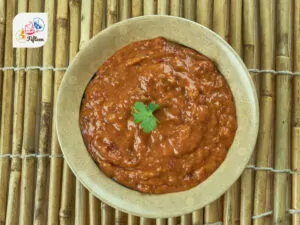
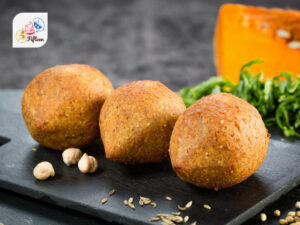
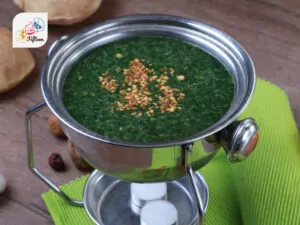
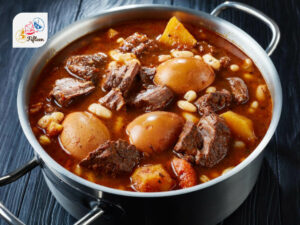
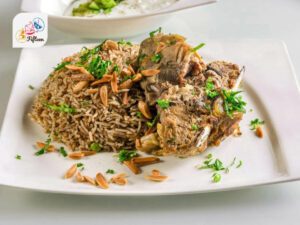
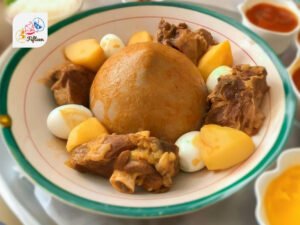
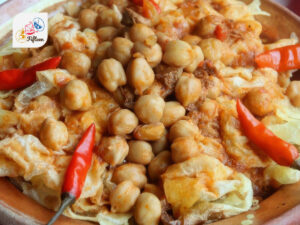
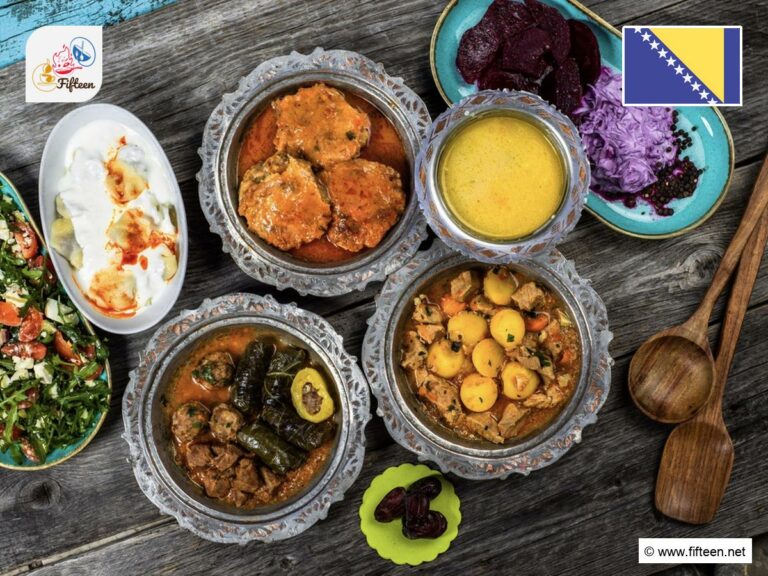
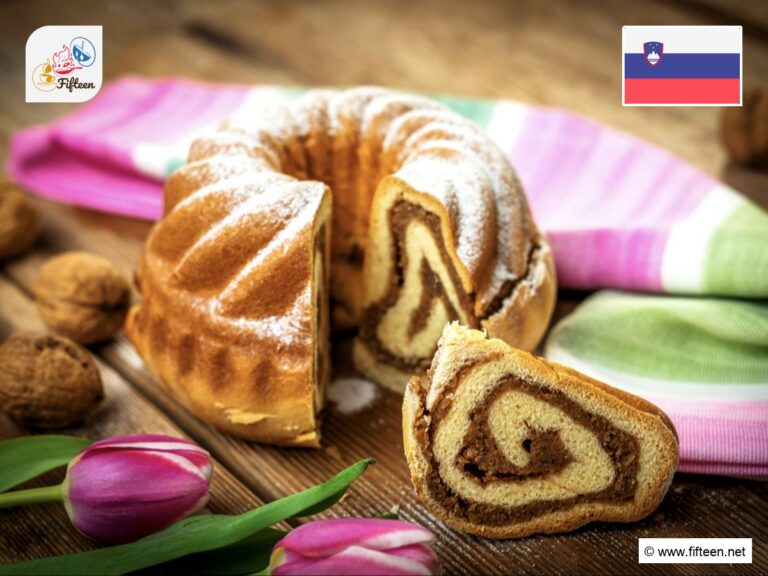
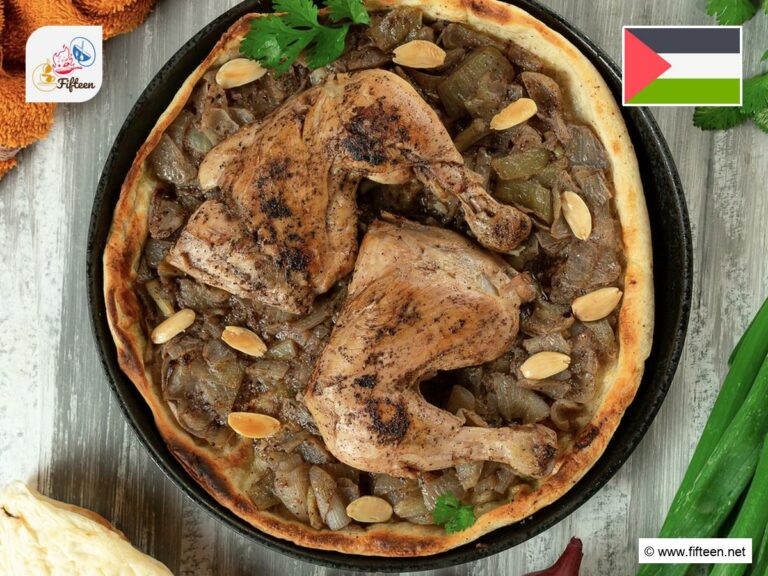
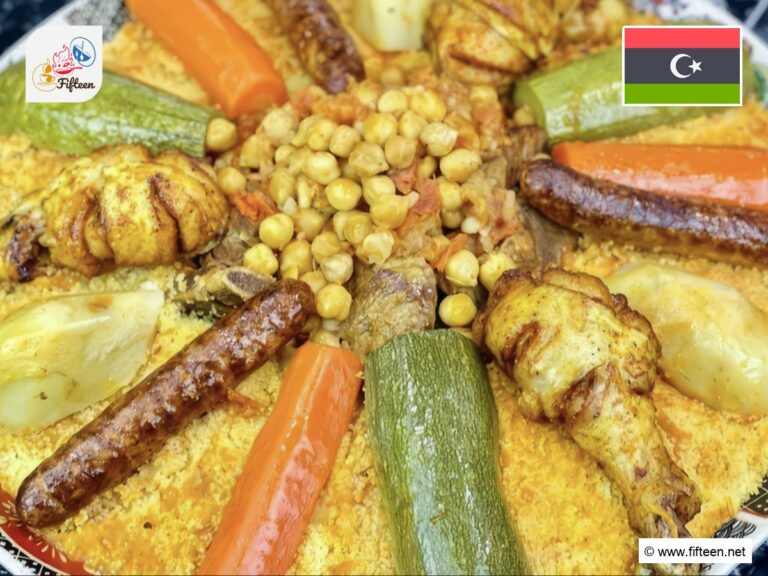
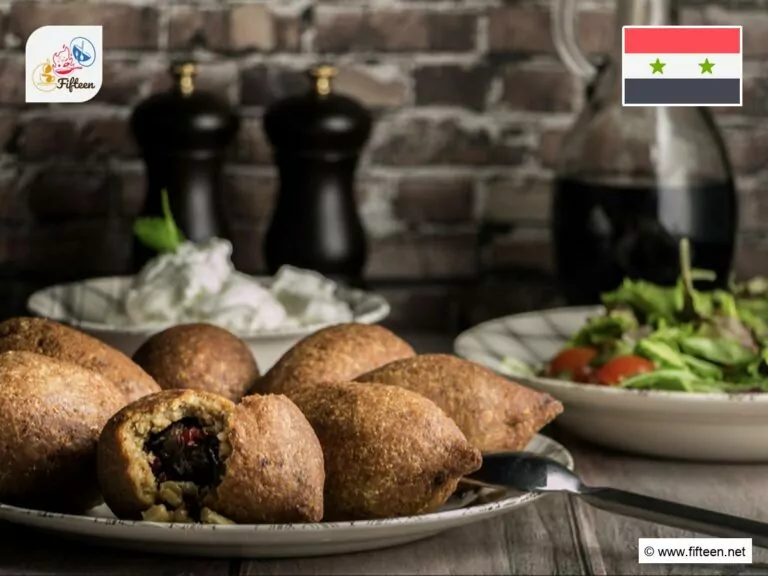
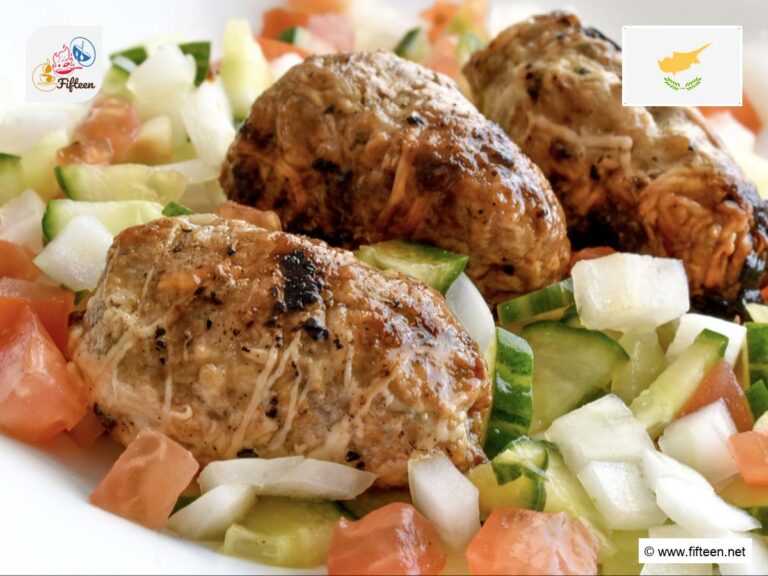
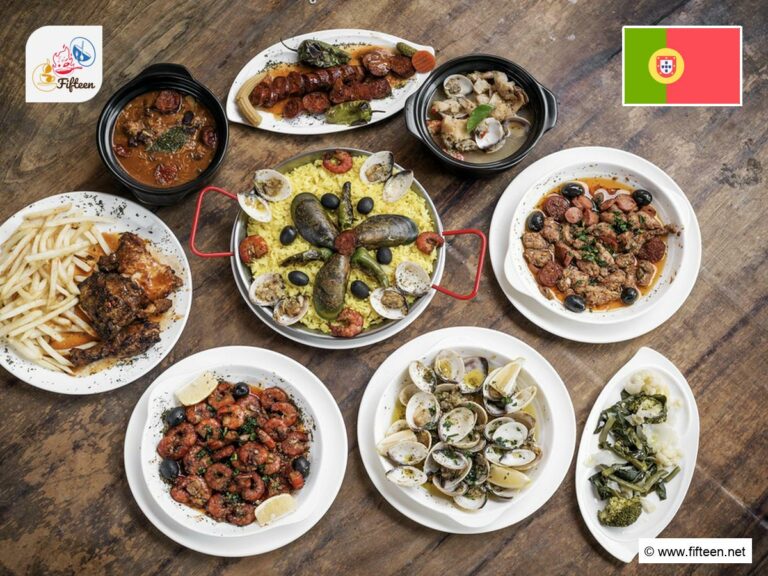
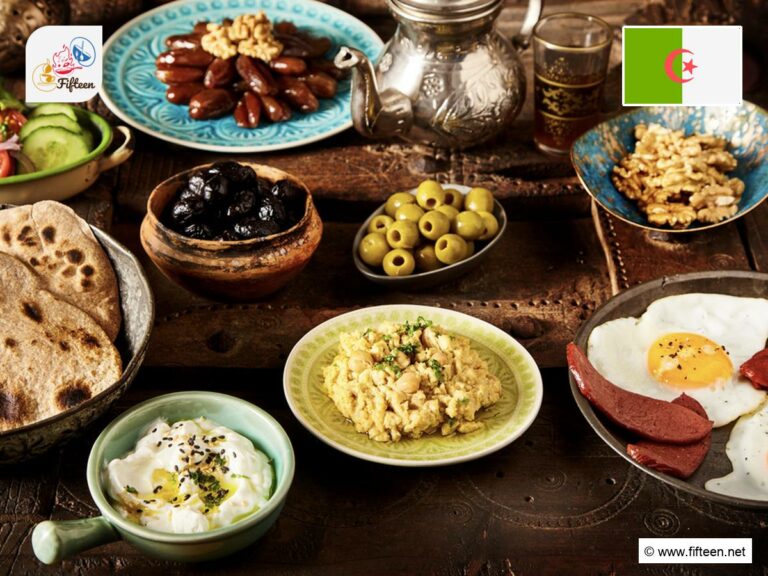
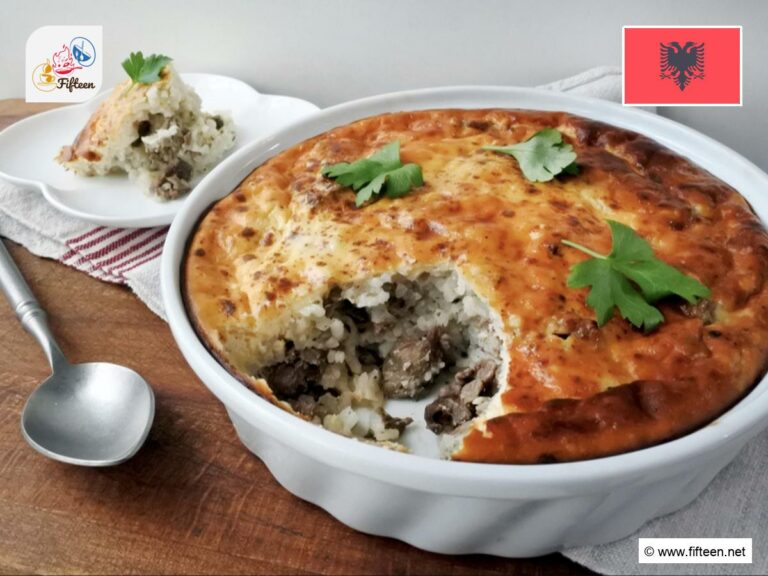
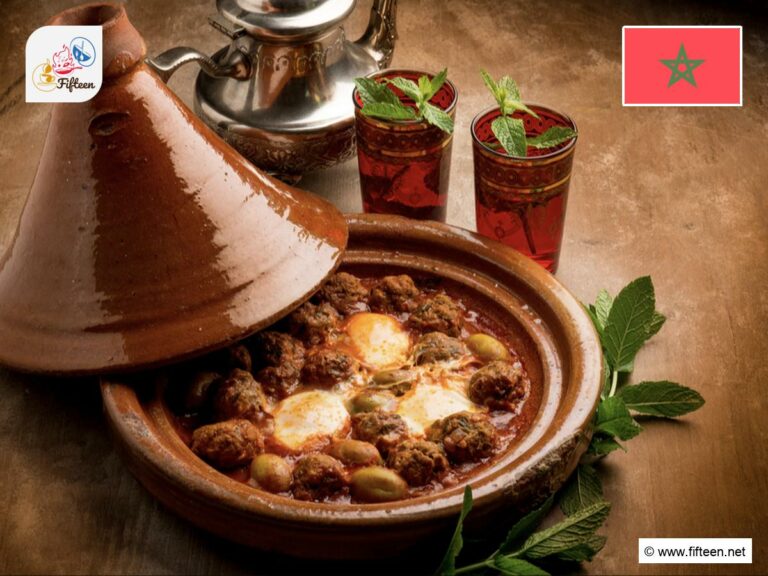
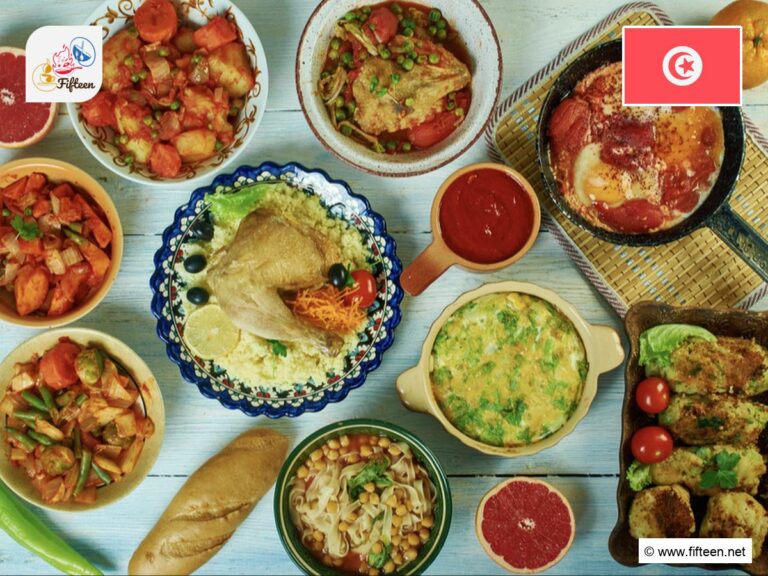
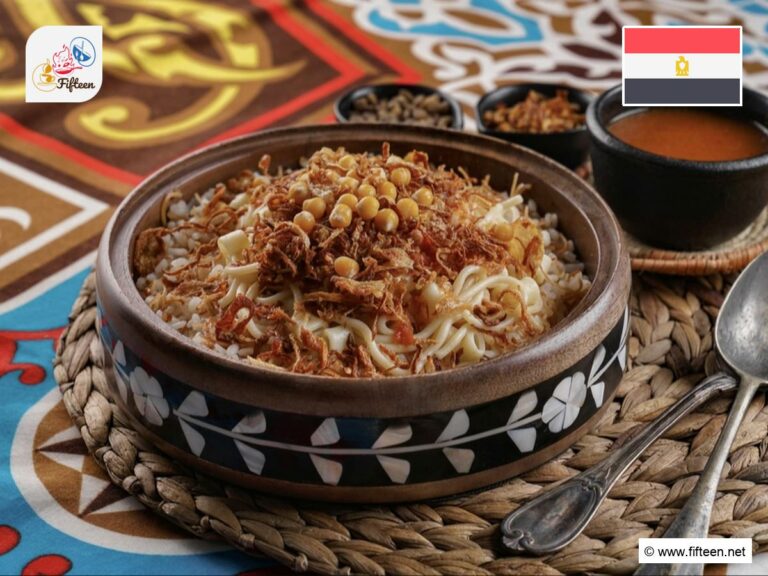
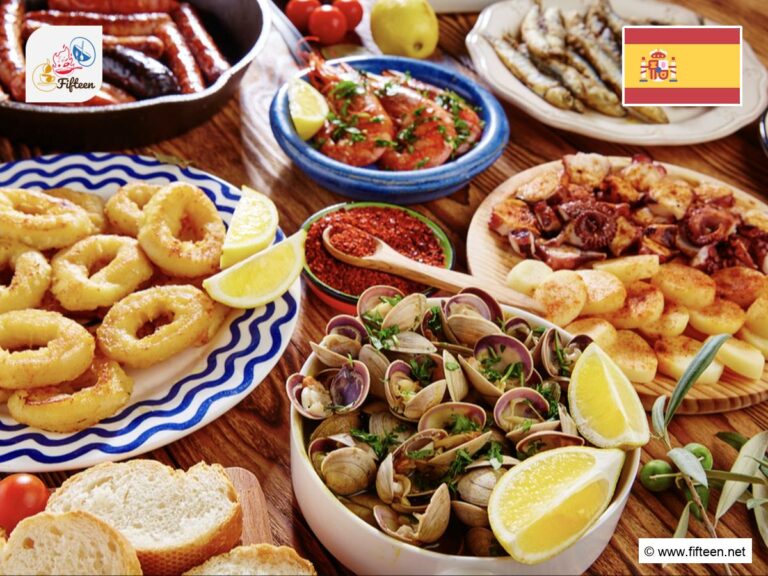
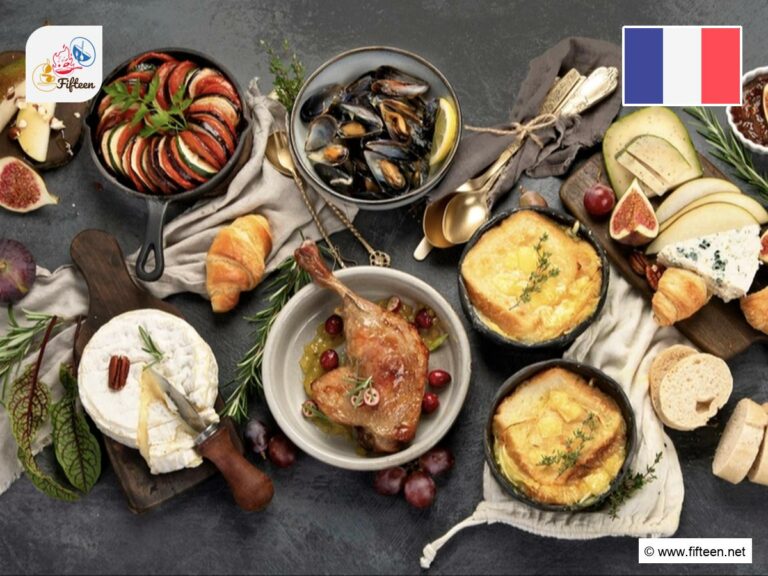
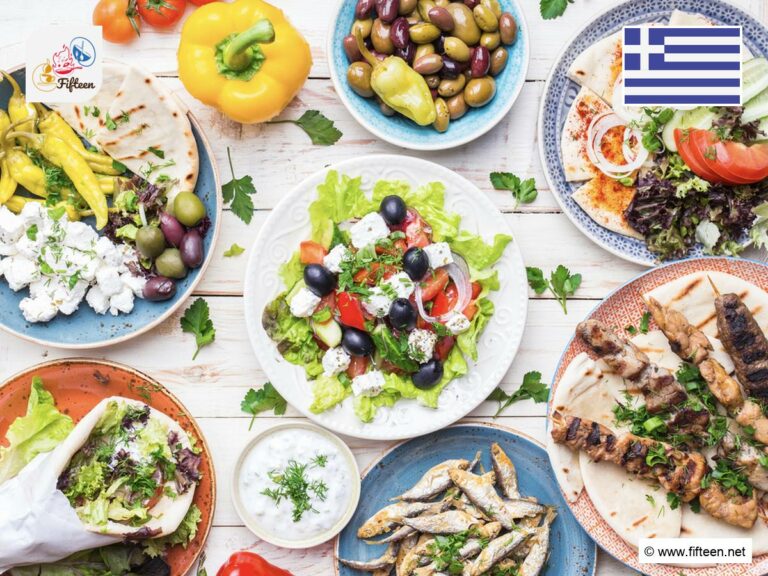
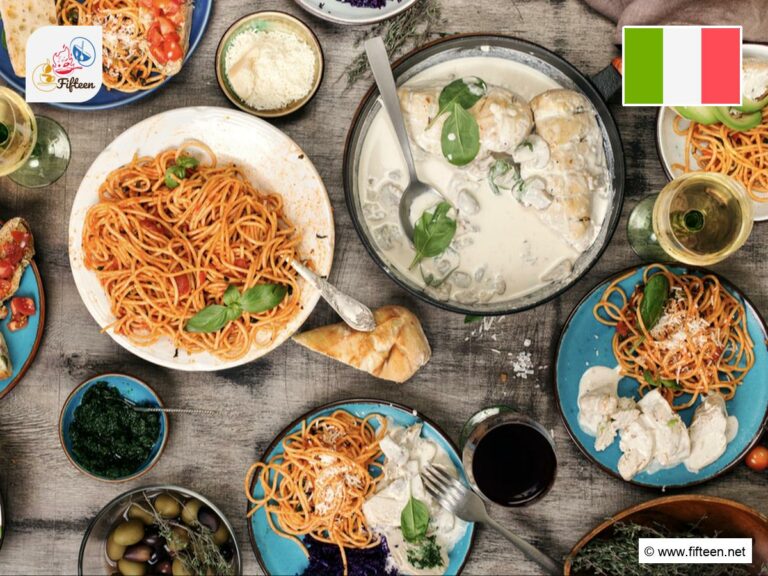
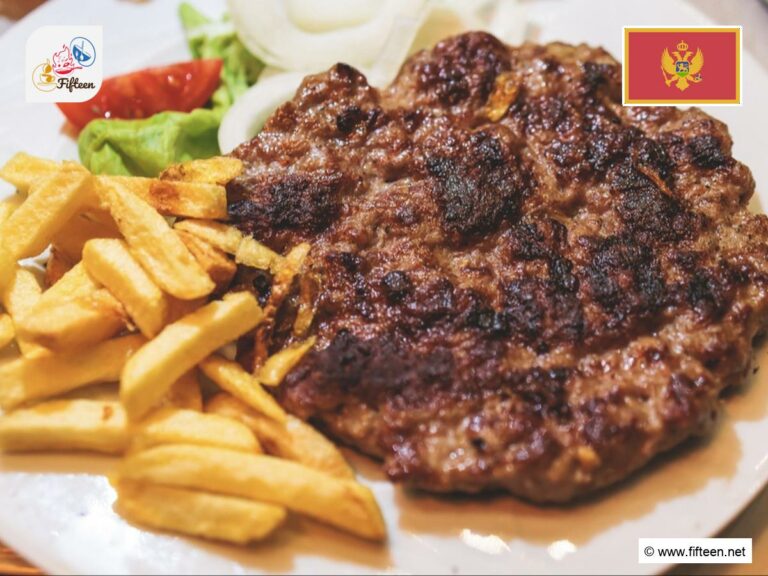
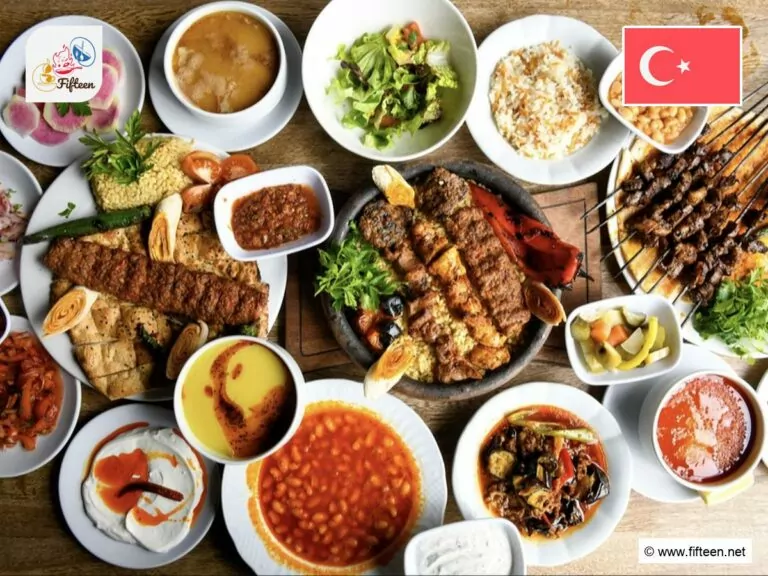
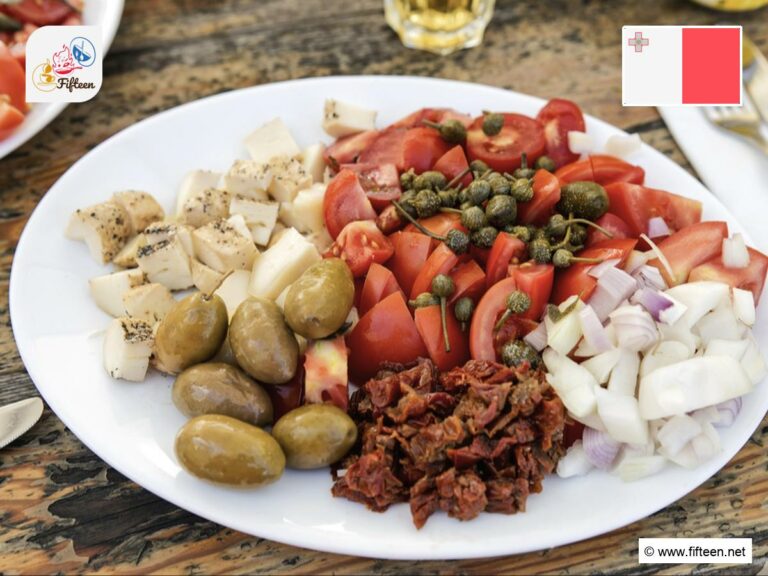
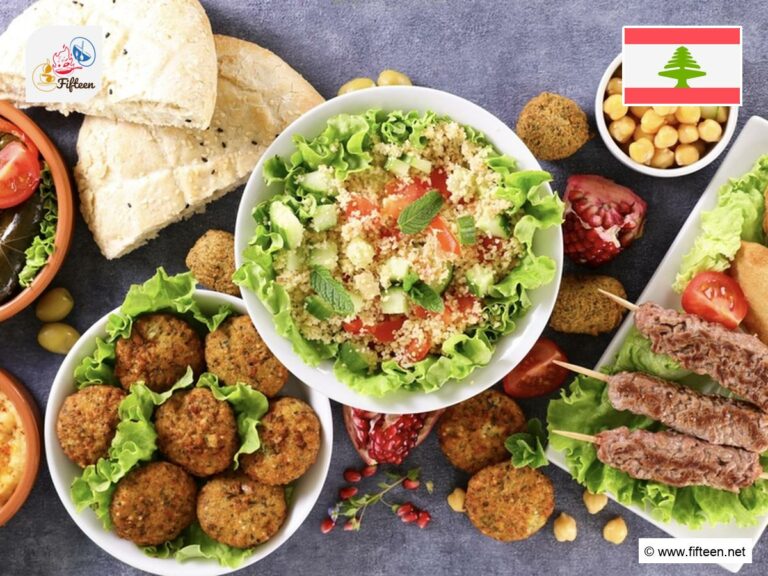
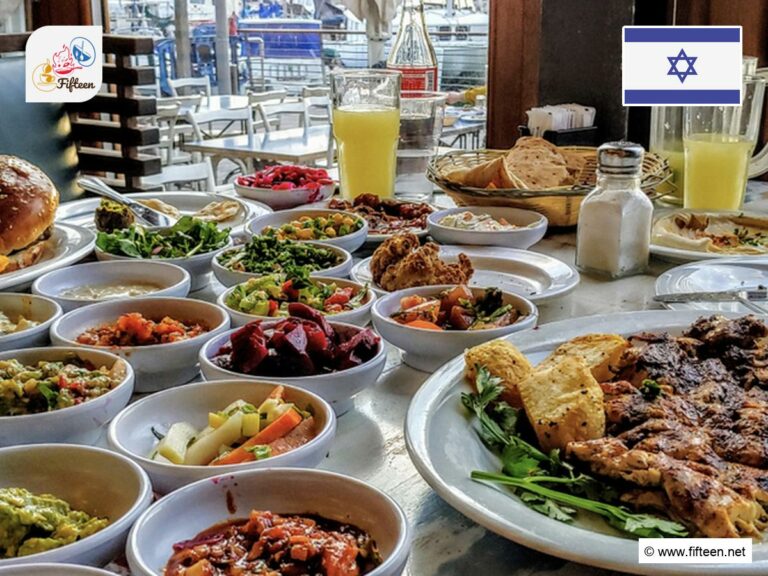
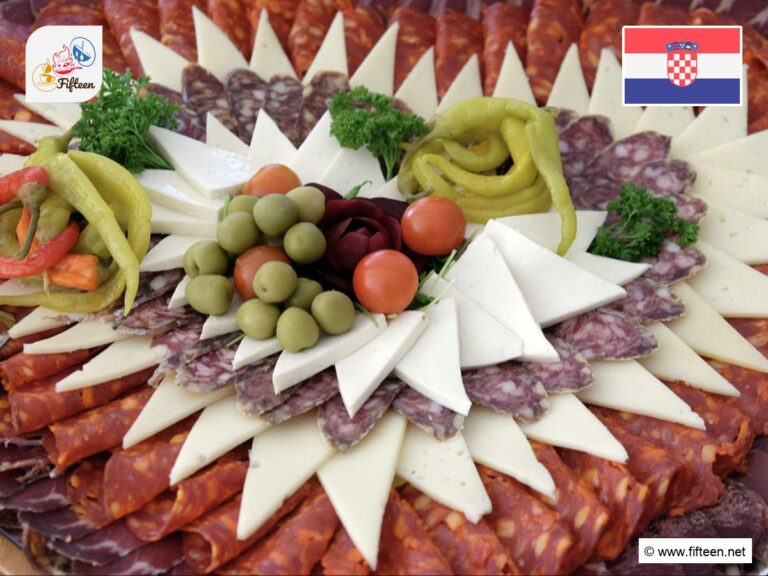
Jamie Scott
Editor in Chief, Senior Content Writer
Expertise
Home Cooking, Meal Planning, Recipe Development, Baking and Pastry, Food Editor, Cooking-video Maker, Western Food Evaluation Expert
Education
Le Cordon Bleu College of Culinary Arts
Local Community College, New York, NY
Jamie Scott is a skilled culinary expert and content creator specializing in Western cuisine. With over 15 years in the culinary field and formal training from Le Cordon Bleu, Paris, Jamie deeply understands how to blend nutrition with delicious flavors. His passion for cooking matches his commitment to making healthy eating accessible and enjoyable.
On Fifteen.net, Jamie brings a fresh perspective to classic dishes and beverages, offering readers insightful recipes, cooking tips, and a fresh view on meal planning that emphasizes taste, health, and simplicity.